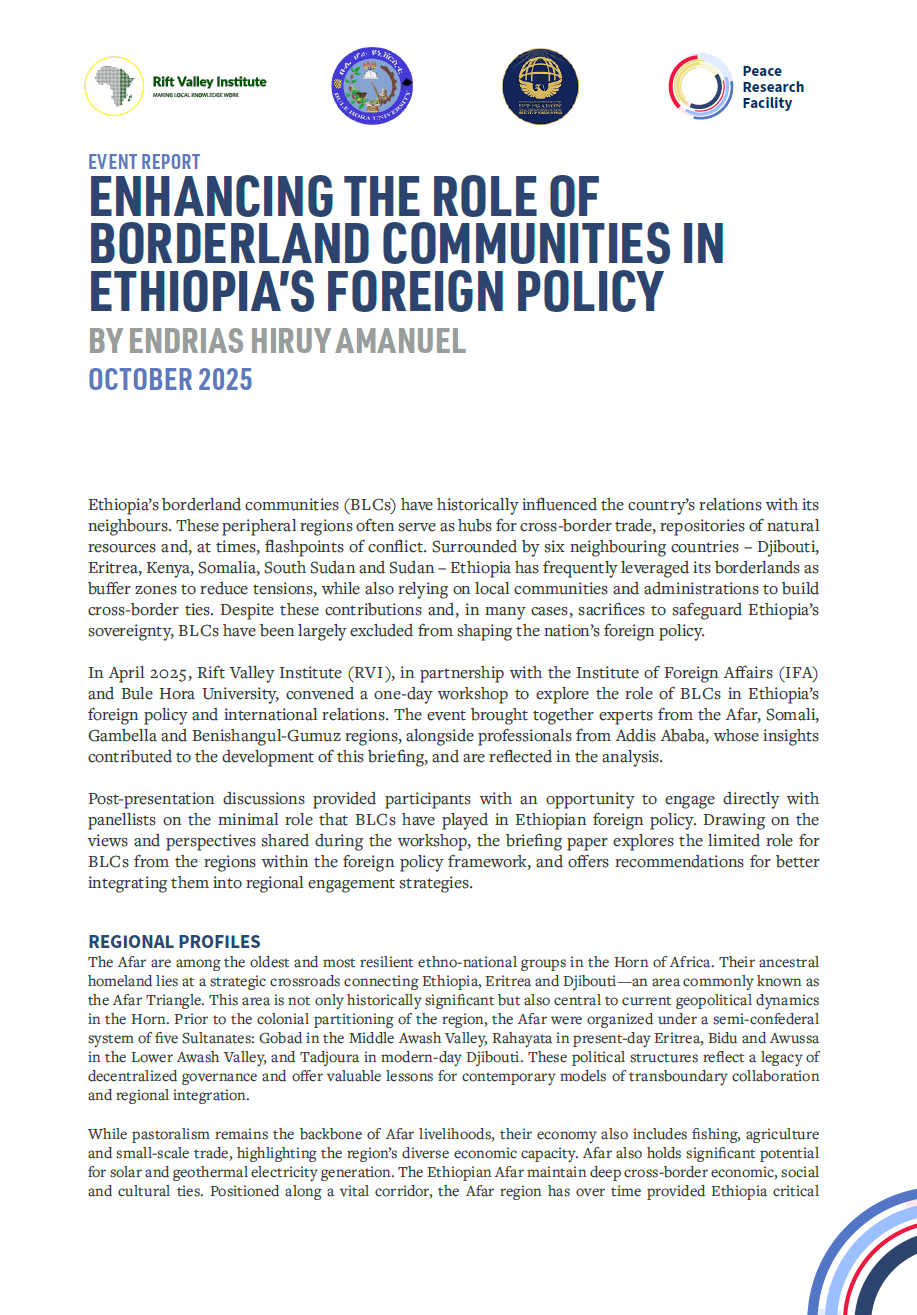SUMMARY
The Juba Peace Agreement (JPA) was negotiated beginning in September 2019 in the South Sudanese capital by representatives of Sudan’s new civilian-military transitional government and a collection of Sudan’s armed and civilian opposition groups comprising the Sudanese Revolutionary Front (SRF). Initial agreement was reached in August 2020 and the official signing took place on 3 October 2020.
Despite the participation of the armed groups, with the goal of resolving all of Sudan’s various violent conflicts at once, the JPA negotiations were not the direct result of their military campaigns. Rather, the talks grew out of a civilian protest movement that had forced the removal of former President Omar al-Bashir from power in 2019 and pressured the generals who ousted him into forming a transitional government with the civilian movement leaders. Indeed, the military capacity of all the armed opposition groups had been significantly degraded, in some cases non-existent, compared with the various high points of their rebellions in the 2000s and 2010s. Two of the groups—SPLM/A-N (Al-Hilu) and SLM/A-Abdelwahid (SLM/A-AW)—rejected the process entirely. Still, some of the armed actors who signed the JPA—particularly the SPLM/A-N (Agar) and the Darfuri groups—had, through their rebellions, contributed to longstanding crises that ultimately led to the ouster of Bashir and his National Congress Party after three decades in power.
The dynamics leading up to and through the JPA negotiations reflected the fact that coalitions and alliances opposed to the Bashir regime over the years were not static; rather, there was a continuous process of alliance-making and division, which is a common feature of armed groups in rural Sudan as well as a characteristic of political parties and movements in cities and urban areas. The armed groups and the civilian opposition, too, had an uneasy relationship throughout the protest movement and after Bashir’s ouster, and those tensions contributed to the shape of the peace agreement that was eventually negotiated. Some of the armed groups aimed to end the hegemony of Sudan’s so-called ‘riverine’ elite. But most of the civilian opposition leaders and political parties that allied with the armed groups of the Sudan Revolutionary Front (SRF) against Bashir in 2019 under the umbrella of the Forces of Freedom and Change (FFC) coalition were from this same elite. Distrust was rife. The problems in the relationships between and among the armed groups and political parties were more personal than ideological. The armed groups suspected the civilian parties did not see them as worthy of the benefits of the agreement – particularly elevation of key SRF leaders to senior positions in the administration. Conversely, the civilian members of the FFC always suspected that the armed groups wanted to engage in a separate negotiation in pursuit if their own, narrower interests.
This is report 1 of 3 in this series. Find the other two reports below:
Report 2: Paying for Peace
Report 3. The Remains of the JPA
The Juba Peace Agreement (JPA) project, which began in 2022, is a collaboration between the Rift Valley Institute(RVI), Confluence Advisory (CA) – the research partners – and the United States Institute of Peace (USIP), which has funded and supported the project.
The project sought to conduct research that would do three things: 1) map out the key actors in the JPA; 2) explain the political economy of the agreement; and 3) set out a series of policy recommendations, and lessons learnt, for international actors involved in the process.
The project started in the aftermath of the October 2021 coup and its conclusion takes place whilst Sudan experiences a devastating national conflict with fighting widespread from Darfur to Khartoum. Amidst the current war, it is all too easy to forget the national peace agreement that preceded it. While the JPA was undeniably flawed, there is much that can be learnt from how the agreement was reached, what it sought to achieve and the mechanisms that were designed, although largely never activated, as part of it.




